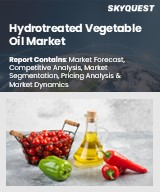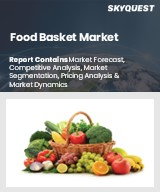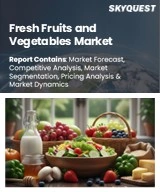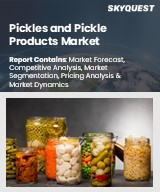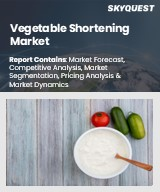
|
시장보고서
상품코드
1700194
세계의 채소 재배 시장 : 채소 유형, 재배 방법, 유통 채널, 최종 사용자, 지역별 분석 및 예측(-2032년)Vegetable Farming Market Forecasts to 2032 - Global Analysis By Vegetable Type, Farming Method, Distribution Channel, End User and By Geography |
||||||
Stratistics MRC에 따르면 세계의 채소 재배 시장은 2025년에 1조 8,000억 달러를 차지하고 예측 기간 동안 CAGR 8.1%를 나타내며 2032년에는 3조 1,000억 달러에 이를 것으로 예상됩니다.
채소 재배는 소비, 거래, 가공용으로 채소를 재배하는 농업입니다. 엽채류, 근채류, 콩류, 과실이 되는 채소 등, 폭넓은 유형의 식용 식물을 재배하기 위해서, 관행적인 농법과 현대적인 농법의 양쪽을 채용할 필요가 있습니다.
유기·건강 식품에 대한 수요 증가
사람들의 건강 지향이 높아져, 무농약의 신선한 농산물을 선호하게 되어 있습니다. 또한, 관행 농법이 환경에 미치는 영향에 대한 의식의 고조가, 소비자를 지속 가능한 유기 농법으로 향하게 하고 있습니다. 이 동향은 유기 농업을 추진하는 정부의 대처나 정책에 의해 더욱 추진되고 있습니다.
병해충의 발생
병해충의 발생은 작물에 상당한 손실을 초래하고 전체 수확량을 줄이고 농부의 수익에 영향을 미칩니다. 이 문제를 해결하기 위해서는 효과적이고 지속 가능한 병해충 관리 전략의 개발이 필수적입니다.
스마트농업과 정밀농업 도입
이러한 첨단 기술을 통해 농부는 작물을 보다 효율적으로 모니터링하고 관리할 수 있어 수확량을 증가시키고 자원 소비를 줄일 수 있습니다. 시간 데이터를 제공합니다. 이 데이터 중심의 접근 방식을 통해 농부는 정보를 기반으로 의사 결정을 내리고 농업 작업을 최적화 할 수 있습니다.
기후 변화와 이상기상
가뭄, 홍수, 기온 변화 등 예측 불가능한 기상 패턴은 작물의 생산과 품질에 심각한 영향을 미칠 수 있습니다. 세계는 탄력적인 농법을 채택하고 기후 변화에 대응하는 농업 기술을 개발함으로써 이러한 변화에 적응해야합니다.
COVID-19의 영향 :
COVID-19의 대유행은 채소 재배 시장에 플러스와 마이너스 모두 영향을 미쳤습니다. 한편으로는 유통 중에 소비자가 건강과 영양을 우선하게 되었기 때문에 신선하고 현지입니다. 생산 채소에 대한 수요가 증가했습니다. 이 소비자 행동의 변화는 소규모 농부와 지역 농부에게 혜택을 가져 왔습니다.
예측 기간 동안 잎 채소 부문이 최대가 될 전망
영양가가 높고 저칼로리 식품 옵션에 대한 수요 증가가 시금치, 케일, 양상추 등의 잎 채소의 인기를 견인하고 있기 때문에 잎 채소 부문은 예측 기간 동안 최대 시장 점유율을 차지할 것으로 예상됩니다. 미네랄, 항산화 물질이 풍부하게 포함되어 있어 건강 지향의 소비자에게 선호되고 있습니다. 또한 잎 채소는 재배가 용이하고 성장 사이클이 짧은 것도, 그 보급에 기여하고 있습니다.
예측기간 동안 관행농법 분야는 가장 높은 CAGR이 예상됩니다.
예측 기간 동안 관행 농법 분야가 가장 높은 성장률을 보일 것으로 예측됩니다. 관행 농법은 선진 농업 기술의 도입이 아직 한정되어 있는 개발 도상 지역에서 널리 사용되고 있습니다.
최대 공유 지역 :
예측 기간 동안 북미가 가장 큰 시장 점유율을 차지할 것으로 예상됩니다. 또한 지속 가능한 농업을 추진하는 정책이 취해지고 있습니다. 또한, 주요 시장 기업의 존재와 소비자의 높은 의식이 이 지역의 우위성에 기여하고 있습니다.
CAGR이 가장 높은 지역 :
예측 기간 동안 아시아태평양은 급속한 인구 증가, 가처분 소득 증가, 식생활의 기호의 변화가 채소 수요를 견인하기 때문에 가장 높은 CAGR을 나타낼 것으로 예측됩니다. 정부의 이니셔티브가 현대적인 농업 관행을 지원하고 있습니다.
무료 사용자 지정 오퍼링 :
이 보고서를 구독하는 고객은 다음 무료 맞춤설정 옵션 중 하나를 사용할 수 있습니다.
- 기업 프로파일
- 추가 시장 기업의 종합적 프로파일링(3개사까지)
- 주요 기업의 SWOT 분석(3개사까지)
- 지역 세분화
- 고객의 관심에 응한 주요국 시장 추계·예측·CAGR(주 : 타당성 확인에 따름)
- 경쟁 벤치마킹
- 제품 포트폴리오, 지리적 존재, 전략적 제휴에 기반한 주요 기업 벤치마킹
목차
제1장 주요 요약
제2장 서문
- 개요
- 이해관계자
- 조사 범위
- 조사 방법
- 데이터 마이닝
- 데이터 분석
- 데이터 검증
- 조사 접근
- 조사 자료
- 1차 조사 자료
- 2차 조사 정보원
- 전제조건
제3장 시장 동향 분석
- 성장 촉진요인
- 성장 억제요인
- 기회
- 위협
- 기술 분석
- 용도 분석
- 최종 사용자 분석
- 신흥 시장
- COVID-19의 영향
제4장 Porter's Five Forces 분석
- 공급기업의 협상력
- 구매자의 협상력
- 대체품의 위협
- 신규 참가업체의 위협
- 경쟁 기업간 경쟁 관계
제5장 세계의 채소 재배 시장 : 채소 유형별
- 잎 채소
- 뿌리 및 괴경 채소
- 십자화과 채소
- 골수 채소
- 부추 채소
- 콩과 채소
- 수생 및 이국적인 채소
- 기타 채소 유형
제6장 세계의 채소 재배 시장 : 재배 방법별
- 재래식 농업
- 유기 농업
- 수경재배
- 아쿠아 포닉스
- 수직 농업
- 기타 재배 방법
제7장 세계의 채소 재배 시장 : 유통 채널별
- 소매점
- 온라인 소매
- 파머스 마켓
- 전문점
- 푸드서비스 제공업체
- 도매시장
- 기타 유통 채널
제8장 세계의 채소 재배 시장 : 최종 사용자별
- 가정
- 상업
- 기타 최종 사용자
제9장 세계의 채소 재배 시장 : 지역별
- 북미
- 미국
- 캐나다
- 멕시코
- 유럽
- 독일
- 영국
- 이탈리아
- 프랑스
- 스페인
- 기타 유럽
- 아시아태평양
- 일본
- 중국
- 인도
- 호주
- 뉴질랜드
- 한국
- 기타 아시아태평양
- 남미
- 아르헨티나
- 브라질
- 칠레
- 기타 남미
- 중동 및 아프리카
- 사우디아라비아
- 아랍에미리트(UAE)
- 카타르
- 남아프리카
- 기타 중동 및 아프리카
제10장 주요 발전
- 계약, 파트너십, 협업, 합작투자
- 인수와 합병
- 신제품 발매
- 사업 확대
- 기타 주요 전략
제11장 기업 프로파일링
- Dole plc
- Fresh Del Monte Produce Inc.
- Costa Group Holdings Limited
- Robinson Fresh
- Driscoll's, Inc.
- Keelings
- Mirak Group
- Fruitable Fresh Sdn Bhd
- Naturipe Farms
- Goknur Gida
- EMONA Co. Ltd.
- Fresgarrido
- BelOrta
- Bonduelle SA
- Greenyard NV
- Sakata Seed Corporation
According to Stratistics MRC, the Global Vegetable Farming Market is accounted for $1.8 trillion in 2025 and is expected to reach $3.1 trillion by 2032 growing at a CAGR of 8.1% during the forecast period. Vegetable farming is the agricultural practice of cultivating vegetables for consumption, trade, and processing. It entails employing both conventional and contemporary agricultural methods to cultivate a broad range of food plants, such as leafy greens, root vegetables, legumes, and fruit-bearing vegetables. Production yields are greatly impacted by a number of factors, including climate, insect management, irrigation, and soil quality.
Market Dynamics:
Driver:
Rising demand for organic & healthy food
People are becoming more health-conscious and prefer consuming fresh, pesticide-free produce. Additionally, the increasing awareness about the environmental impact of conventional farming is pushing consumers towards sustainable and organic options. This trend is further supported by government initiatives and policies promoting organic farming practices. As a result, the demand for organic vegetables continues to surge globally.
Restraint:
Pest & disease outbreaks
These outbreaks can cause significant crop losses and reduce the overall yield, affecting farmers' profitability. In addition, the reliance on chemical pesticides to combat these issues can lead to environmental pollution and health risks. Developing effective and sustainable pest management strategies is crucial to address these challenges. However, the unpredictability of pest and disease occurrences makes it difficult to implement consistent solutions.
Opportunity:
Adoption of smart agriculture & precision farming
These advanced technologies enable farmers to monitor and manage their crops more efficiently, leading to higher yields and reduced resource consumption. Precision farming tools, such as drones, sensors, and satellite imagery, provide real-time data on crop health and soil conditions. This data-driven approach allows farmers to make informed decisions and optimize their farming practices. The integration of IoT and AI in agriculture is further revolutionizing the industry.
Threat:
Climate change & extreme weather conditions
Unpredictable weather patterns, such as droughts, floods, and temperature fluctuations, can severely impact crop production and quality. These adverse conditions not only affect yields but also increase the risk of pest and disease outbreaks. The farming community needs to adapt to these changes by adopting resilient farming practices and developing climate-smart agriculture techniques. However, the long-term effects of climate change remain a considerable concern for the industry.
Covid-19 Impact:
The Covid-19 pandemic has had both positive and negative effects on the vegetable farming market. On one hand, the demand for fresh and locally sourced vegetables increased as consumers are prioritizing health and nutrition during the pandemic. This shift in consumer behavior benefited small-scale and local farmers. Additionally, the economic downturn and reduced purchasing power affected the overall market growth.
The leafy green vegetables segment is expected to be the largest during the forecast period
The Leafy Green Vegetables segment is expected to account for the largest market share during the forecast period due to the growing demand for nutritious and low-calorie food options is driving the popularity of leafy greens like spinach, kale, and lettuce. These vegetables are rich in vitamins, minerals, and antioxidants, making them a preferred choice among health-conscious consumers. Furthermore, the ease of cultivation and short growth cycles of leafy greens contribute to their widespread adoption. The segment's growth is also supported by the rising trend of urban farming and hydroponics.
The conventional farming segment is expected to have the highest CAGR during the forecast period
Over the forecast period, the Conventional Farming segment is predicted to witness the highest growth rate during the forecast period. Despite the growing interest in organic farming, conventional farming practices continue to dominate the vegetable farming market. This is due to their cost-effectiveness, higher yield potential, and well-established techniques. Conventional farming methods are widely used in developing regions where the adoption of advanced agricultural technologies is still limited. The segment's growth is driven by the increasing demand for high-volume vegetable production to meet global food requirements.
Region with largest share:
During the forecast period, the North America region is expected to hold the largest market share These regions has strong demand for fresh and organic vegetables, coupled with advanced farming techniques, supports this growth. The United States and Canada, in particular, have well-developed agricultural infrastructure and policies promoting sustainable farming practices. Additionally, the presence of major market players and a high level of consumer awareness contribute to the region's dominance. North America's focus on innovative agricultural technologies further enhances its market position.
Region with highest CAGR:
Over the forecast period, the Asia Pacific region is anticipated to exhibit the highest CAGR due to the rapid population growth, increasing disposable income, and changing dietary preferences drive the demand for vegetables. Countries like China, India, and Japan are at the forefront of this growth, with government initiatives supporting modern agricultural practices. The adoption of advanced technologies and the expansion of agricultural research and development activities further propel the market. The growing awareness about the health benefits of vegetables also fuels the region's market expansion.
Key players in the market
Some of the key players in Vegetable Farming Market include Dole plc, Fresh Del Monte Produce Inc., Costa Group Holdings Limited, Robinson Fresh, Driscoll's, Inc., Keelings, Mirak Group, Fruitable Fresh Sdn Bhd, Naturipe Farms, Goknur Gida, EMONA Co. Ltd., Fresgarrido, BelOrta, Bonduelle S.A, Greenyard NV and Sakata Seed Corporation.
Key Developments:
In March 2024, EcoPack introduced biodegradable and compostable packaging for fresh vegetables. This packaging is made from plant-based materials and is designed to extend the shelf life of vegetables.
In March 2024, AeroFarms launched its next-generation vertical farming system, integrating AI-driven climate control and LED lighting optimization. This system reduces water usage by 95% and increases crop yields by 20-30%, making it ideal for urban vegetable farming.
In February 2024, Rise Gardens introduced a new line of home hydroponic kits designed for growing vegetables like lettuce, peppers, and herbs indoors. The kits come with app-based monitoring for light, nutrients, and water levels.
Vegetable Types Covered:
- Leafy Green Vegetables
- Root & Tuber Vegetables
- Cruciferous Vegetables
- Marrow Vegetables
- Allium Vegetables
- Legume Vegetables
- Aquatic & Exotic Vegetables
- Other Vegetable Types
Farming Methods Covered:
- Conventional Farming
- Organic Farming
- Hydroponics
- Aquaponics
- Vertical Farming
- Other Farming Methods
Distribution Channels Covered:
- Retail Stores
- Online Retailing
- Farmers Market
- Specialty Stores
- Foodservice Providers
- Wholesale Markets
- Other Distribution Channels
End Users Covered:
- Household
- Commercial
- Other End Users
Regions Covered:
- North America
- US
- Canada
- Mexico
- Europe
- Germany
- UK
- Italy
- France
- Spain
- Rest of Europe
- Asia Pacific
- Japan
- China
- India
- Australia
- New Zealand
- South Korea
- Rest of Asia Pacific
- South America
- Argentina
- Brazil
- Chile
- Rest of South America
- Middle East & Africa
- Saudi Arabia
- UAE
- Qatar
- South Africa
- Rest of Middle East & Africa
What our report offers:
- Market share assessments for the regional and country-level segments
- Strategic recommendations for the new entrants
- Covers Market data for the years 2024, 2025, 2026, 2028, and 2032
- Market Trends (Drivers, Constraints, Opportunities, Threats, Challenges, Investment Opportunities, and recommendations)
- Strategic recommendations in key business segments based on the market estimations
- Competitive landscaping mapping the key common trends
- Company profiling with detailed strategies, financials, and recent developments
- Supply chain trends mapping the latest technological advancements
Free Customization Offerings:
All the customers of this report will be entitled to receive one of the following free customization options:
- Company Profiling
- Comprehensive profiling of additional market players (up to 3)
- SWOT Analysis of key players (up to 3)
- Regional Segmentation
- Market estimations, Forecasts and CAGR of any prominent country as per the client's interest (Note: Depends on feasibility check)
- Competitive Benchmarking
- Benchmarking of key players based on product portfolio, geographical presence, and strategic alliances
Table of Contents
1 Executive Summary
2 Preface
- 2.1 Abstract
- 2.2 Stake Holders
- 2.3 Research Scope
- 2.4 Research Methodology
- 2.4.1 Data Mining
- 2.4.2 Data Analysis
- 2.4.3 Data Validation
- 2.4.4 Research Approach
- 2.5 Research Sources
- 2.5.1 Primary Research Sources
- 2.5.2 Secondary Research Sources
- 2.5.3 Assumptions
3 Market Trend Analysis
- 3.1 Introduction
- 3.2 Drivers
- 3.3 Restraints
- 3.4 Opportunities
- 3.5 Threats
- 3.6 Technology Analysis
- 3.7 Application Analysis
- 3.8 End User Analysis
- 3.9 Emerging Markets
- 3.10 Impact of Covid-19
4 Porters Five Force Analysis
- 4.1 Bargaining power of suppliers
- 4.2 Bargaining power of buyers
- 4.3 Threat of substitutes
- 4.4 Threat of new entrants
- 4.5 Competitive rivalry
5 Global Vegetable Farming Market, By Vegetable Type
- 5.1 Introduction
- 5.2 Leafy Green Vegetables
- 5.3 Root & Tuber Vegetables
- 5.4 Cruciferous Vegetables
- 5.5 Marrow Vegetables
- 5.6 Allium Vegetables
- 5.7 Legume Vegetables
- 5.8 Aquatic & Exotic Vegetables
- 5.9 Other Vegetable Types
6 Global Vegetable Farming Market, By Farming Method
- 6.1 Introduction
- 6.2 Conventional Farming
- 6.3 Organic Farming
- 6.4 Hydroponics
- 6.5 Aquaponics
- 6.6 Vertical Farming
- 6.7 Other Farming Methods
7 Global Vegetable Farming Market, By Distribution Channel
- 7.1 Introduction
- 7.2 Retail Stores
- 7.3 Online Retailing
- 7.4 Farmers Market
- 7.5 Specialty Stores
- 7.6 Foodservice Providers
- 7.7 Wholesale Markets
- 7.8 Other Distribution Channels
8 Global Vegetable Farming Market, By End User
- 8.1 Introduction
- 8.2 Household
- 8.3 Commercial
- 8.4 Other End Users
9 Global Vegetable Farming Market, By Geography
- 9.1 Introduction
- 9.2 North America
- 9.2.1 US
- 9.2.2 Canada
- 9.2.3 Mexico
- 9.3 Europe
- 9.3.1 Germany
- 9.3.2 UK
- 9.3.3 Italy
- 9.3.4 France
- 9.3.5 Spain
- 9.3.6 Rest of Europe
- 9.4 Asia Pacific
- 9.4.1 Japan
- 9.4.2 China
- 9.4.3 India
- 9.4.4 Australia
- 9.4.5 New Zealand
- 9.4.6 South Korea
- 9.4.7 Rest of Asia Pacific
- 9.5 South America
- 9.5.1 Argentina
- 9.5.2 Brazil
- 9.5.3 Chile
- 9.5.4 Rest of South America
- 9.6 Middle East & Africa
- 9.6.1 Saudi Arabia
- 9.6.2 UAE
- 9.6.3 Qatar
- 9.6.4 South Africa
- 9.6.5 Rest of Middle East & Africa
10 Key Developments
- 10.1 Agreements, Partnerships, Collaborations and Joint Ventures
- 10.2 Acquisitions & Mergers
- 10.3 New Product Launch
- 10.4 Expansions
- 10.5 Other Key Strategies
11 Company Profiling
- 11.1 Dole plc
- 11.2 Fresh Del Monte Produce Inc.
- 11.3 Costa Group Holdings Limited
- 11.4 Robinson Fresh
- 11.5 Driscoll's, Inc.
- 11.6 Keelings
- 11.7 Mirak Group
- 11.8 Fruitable Fresh Sdn Bhd
- 11.9 Naturipe Farms
- 11.10 Goknur Gida
- 11.11 EMONA Co. Ltd.
- 11.12 Fresgarrido
- 11.13 BelOrta
- 11.14 Bonduelle S.A
- 11.15 Greenyard NV
- 11.16 Sakata Seed Corporation







